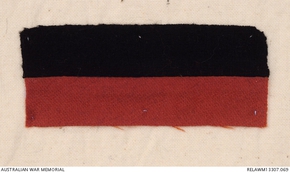SPENCE, John
| Service Number: | 60999 |
|---|---|
| Enlisted: | 17 June 1918, Melbourne, Victoria |
| Last Rank: | Private |
| Last Unit: | 5th Infantry Battalion |
| Born: | Bendigo, Victoria, 9 December 1899 |
| Home Town: | White Hills, Bendigo, Victoria |
| Schooling: | Not yet discovered |
| Occupation: | Farm labourer |
| Died: | Natural causes, 5 November 1972, aged 72 years, place of death not yet discovered |
| Cemetery: | Not yet discovered |
| Memorials: | Bendigo East Bendigo School Memorial Plaques, Bendigo Great War Roll of Honor, Bendigo White Hills Arch of Triumph |
World War 1 Service
| 17 Jun 1918: | Enlisted AIF WW1, Private, 60999, Melbourne, Victoria | |
|---|---|---|
| 31 Aug 1918: | Involvement AIF WW1, Private, 60999, 1st to 17th (VIC) Reinforcements, Enlistment/Embarkation WW1, --- :embarkation_roll: roll_number: '20' embarkation_place: Melbourne embarkation_ship: HMAT Barambah embarkation_ship_number: A37 public_note: '' | |
| 31 Aug 1918: | Embarked AIF WW1, Private, 60999, 1st to 17th (VIC) Reinforcements, HMAT Barambah, Melbourne | |
| 7 Oct 1919: | Discharged AIF WW1, Private, 60999, 5th Infantry Battalion |
Help us honour John Spence's service by contributing information, stories, and images so that they can be preserved for future generations.
Add my storyBiography contributed by Jack Coyne
Private John Spence SN 60999
John was one of the last lads to enlist in the First World War listed on the White Hills Arch of Triumph.
He was born in Bendigo in 1899 and listed his father Joseph as Nearest of Kin. He listed his father’s address in Brunswick at this time, whereas his mother Lucy seems to be still living in White Hills. John said he was a Farm Labourer.
To complete his enlistment, he was required to submit his birth certificate at the Melbourne Town Hall on July 17, 1918. John had earlier applied to join the Australian Imperial Force (AIF) in Bendigo on May 25, 1918 however he appears to have had trouble convincing the military authorities he was of recruitment age. Both parents signed a consent form for John to enlist and verified he was born in 1899.
John would go into camp at Broadmeadows on July 20. He would be placed in the Depot battalion for three weeks and then allocated to 9th General Service Reinforcements.
He along with the other reinforcements would leave Melbourne on the HMAT Barambah A37 on October 11, 1918. The HMAT A37 Barambah was previously a captured German vessel called Hobart. It was manned by Australia officers and crew and transferred to Commonwealth Government Line, 23 May 1918.
It would be a month long sea voyage disembarking in London on November 14 to discover the news that the war was over, just three days earlier. We have no understanding of how John and the other recruits from Victoria felt on hearing the news.
It looks like the recruits were unable to take part in any of the celebrations in London as they were trained south of London and 'Marched In' into their (AIF) Camp at Perham Downs on the Salisbury Plain, southern England on the same day. On this day, they would also find out they are be allotted to the Reinforcements of the 5th Battalion.
In December (12) they move camp to Parkhouse to the 12th Training Division. Park House, situated close to Tidworth, became a depot for the AIF, housing the many training battalions. Here he would spend the bulk of winter here, Christmas and New Year away from home, all in preparation for transfer to war torn France.
On January 25, 1919 John and fellow recruits would leave the Hurdcoot camp and sail to France via Southampton. He would be 'Taken on Strength' (TOS) from the Reinforcements into the 5th battalion.
The 5th Battalion was among the first infantry units raised for the AIF during the First World War. The battalion fought in just about every major battle from Gallipoli to Belgium and France. During the war, a total of 970 members of the battalion were killed, while a further 2,013 were wounded. Many members of the battalion received awards for bravery and distinguished service.
Soon after the fighting ended the long process of demobilisation and repatriation began and men from the battalion began marching out to begin the journey back to Australia as John was marching in. Slowly the 5th Battalion's numbers dwindled and by April 1919, it was amalgamated with the 8th Battalion.
John would leave France in mid May 1919, earmarked to return to England in order to head home. The process the last to arrive in France would be the last on the priority list to return to Australia. Back in England he would be 'Marched In' to the Number 1 Camp and on August 1 at Hurdcott and then up through Engalnd to Liverpool to leave for Australia. He would be back in Melbourne on September 22, 1919.
Private John Spence is remembered by the people of White Hills. The names of the local lads who sacrificed their lives and those that were fortunate to return from the Great War are shown on the embossed copper plaques on the White Hills Arch of Triumph, at the entrance to the White Hills Botanic Gardens.










